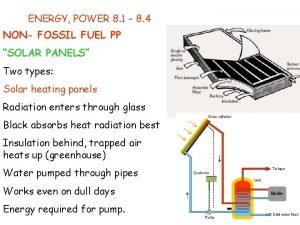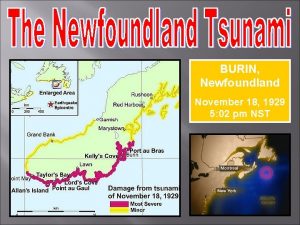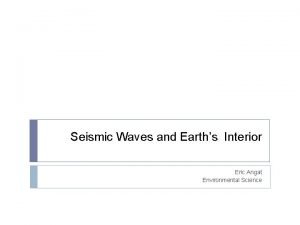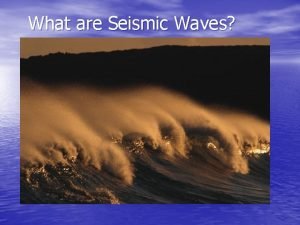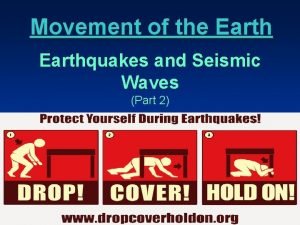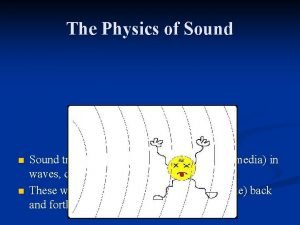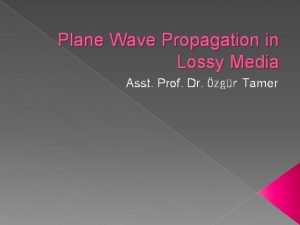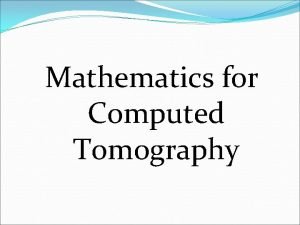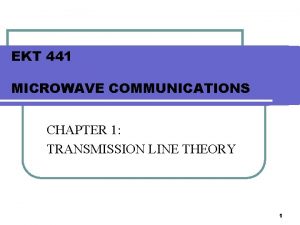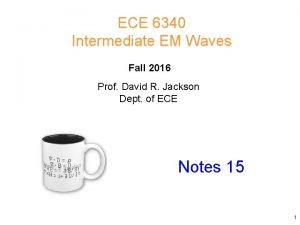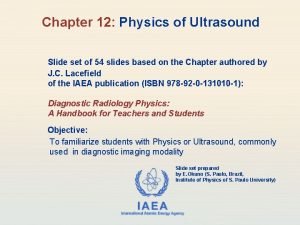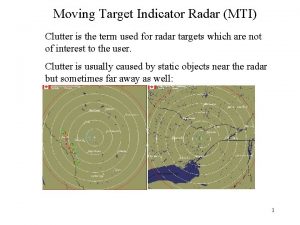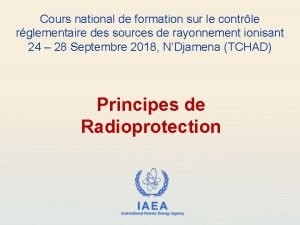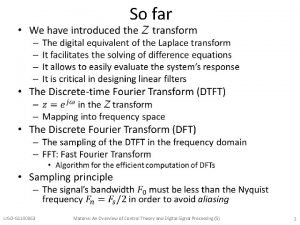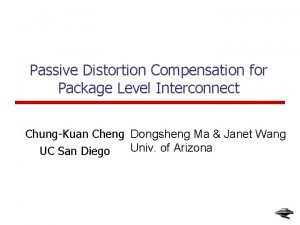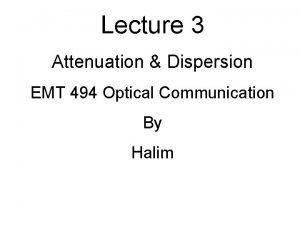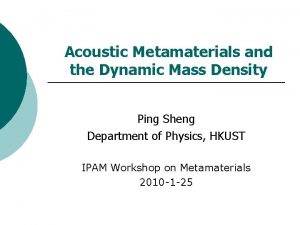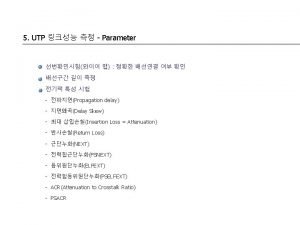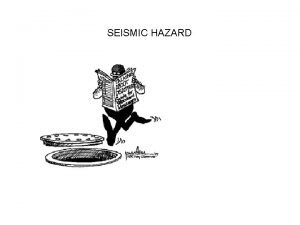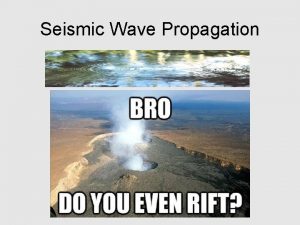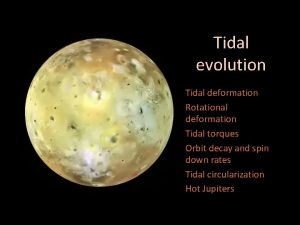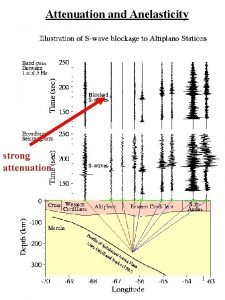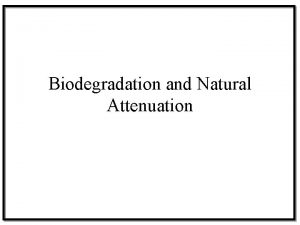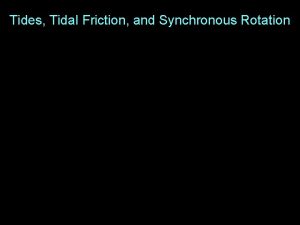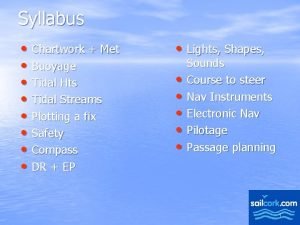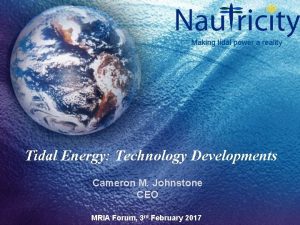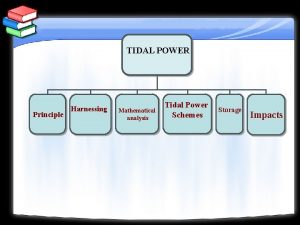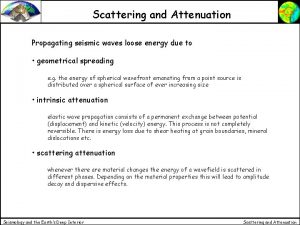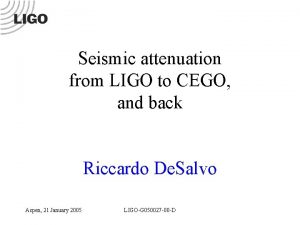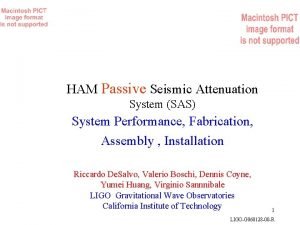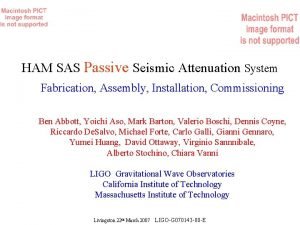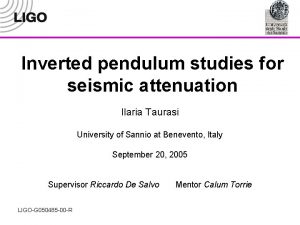Some remarks on seismic wave attenuation and tidal




























- Slides: 28

Some remarks on seismic wave attenuation and tidal dissipation Shun-ichiro Karato Yale University Department of Geology & Geophysics 12/15 MR 22 B-01 1

Why Q? orbital evolution tidal heating. Q -> internal state T, water, grain-size----- 12/15 MR 22 B-01 2

• What is the relation between seismological Q and tidal energy dissipation? – frequency, T-dependence of microscopic Q and tidal energy dissipation (phenomenology) • Q and internal structure of a planet – What controls Q? • T, water, strain, grain-size, ? ? – Why is tidal dissipation of the Moon so large ? – What controls the Q of a giant planet (what controls the tidal evolution of extra-solar planets)? 12/15 MR 22 B-01 3

Conditions of deformation (tele-)seismic wave propagation tidal deformation 12/15 MR 22 B-01 4

Depth variation of tidal dissipation Energy dissipation occurs in most part in the deep interior of a planet. High-temperature non-elastic properties control tidal Q (similar to seismic waves but at lower frequencies and higher strain amplitude). (Peale and Cassen, 1978) 12/15 MR 22 B-01 5

Phenomenology 12/15 MR 22 B-01 6

models of anelasticity Absorption band model log t 12/15 MR 22 B-01 7

-1 (for small Q ) 12/15 MR 22 B-01 8

Experimental observations on Q olivine (Jackson et al. , 2002) Mg. O (Getting et al. 1997) Fe (Jackson et al. , 2000)) • Most of actual results for minerals, oxides and metals at high-T and low frequencies show weak frequency dependence of Q. (absorption band model) 12/15 MR 22 B-01 9

“wet” “dry” Aizawa et al. (2008) Tan et al. (2001) 12/15 MR 22 B-01 10

Non-linear anelasticity (Lakki et al. (1998)) Amplitude of anelasticity increases with stress at high T (above a critical stress (strain)). This tendency is stronger at lower frequencies --> enhanced anelasticity for tidal dissipation? 12/15 MR 22 B-01 11

Non-linear anelasticity? • For strain (stress). , energy dissipation increases with • Linear anelasticity for seismic wave propagation, but non-linear anelasticity for tidal dissipation? 12/15 MR 22 B-01 12

Frequency dependence of Q from geophysical/astronomical observations tide (Goldreich and Soter, 1966) seismic waves (+ Chandler wobble, free oscil. ) (Karato and Spetzler, 1990) 12/15 MR 22 B-01 13

lunar T-z (selenotherm) model (Hood, 1986) Lunar Q model Water-rich (Earth-like) deep mantle ? (Saal et al. , 2008) Due to non-linear anelasticity ? Williams et al. (2001) 12/15 MR 22 B-01 14

conclusions • Tidal energy dissipation and seismic Q are related but follow different frequency and temperature dependence (for some models). • Tidal Q is likely smaller than seismic Q because of low frequency and high strain (no data on strain-dependent Q for Earth materials). • Solid part of a planet can have large energy dissipation (low Q) at high temperatures. • Influence of grain-size is modest, but the influence of water is likely very large (not confirmed yet). • Low tidal Q of the Moon is likely due to high water content (+ high strain amplitude). 12/15 MR 22 B-01 15

Tidal Q • lower Q than seismological Q • low frequency, high strain • non-linear anelasticity, distantdependent Q ( )? • time-dependent Q (t) (due to cooling of planets)? 12/15 MR 22 B-01 16

Mg. O (Getting et al. , 1997) 12/15 MR 22 B-01 17

Deformation (generation of dislocations) enhances anelasticity 12/15 MR 22 B-01 18

Q in terrestrial planets • Liquid portion – Small dissipation (Q~105) • Liquid-solid mixture – Not large because a mixture is not stable under the gravitational field (liquid and solid tend to be separated) • Solid portion – Large dissipation (Q~10 -103) 12/15 MR 22 B-01 19

12/15 MR 22 B-01 20

Laboratory studies of Q (on mantle minerals, olivine) 12/15 MR 22 B-01 21

Conclusions • Significant energy dissipation (Q-1) occurs in the solid part of terrestrial planets (due to thermally activated motion of crystalline defects). • The degree of energy dissipation depends on temperature (pressure), water content (and grain-size) and frequency. • Seismological observations on the distribution of Q can be interpreted by the distribution of temperature (pressure) and water content. • Energy dissipation for tidal deformation is larger (smaller Q) than that for seismic waves. The degree of tidal dissipation depends on temperature (T/Tm) and water content of a terrestrial planet. 12/15 MR 22 B-01 22

12/15 MR 22 B-01 23

Jackson et al. (2002) 12/15 MR 22 B-01 24

Orbital evolution and Q (Jeffreys, 1976) 12/15 MR 22 B-01 25

Macroscopic processes causing Q • Giant planets – Dynamic, wave-like mode of deformation – Very small energy dissipation (Q~105) • Terrestrial planets – Quasi-static deformation – Elastic deformation, plastic flow, anelasticity – Large energy dissipation (Q~10 -103) 12/15 MR 22 B-01 26

12/15 MR 22 B-01 27

Depth variation of Q in Earth’s mantle 12/15 MR 22 B-01 28
 Wave and tidal power
Wave and tidal power Wave and tidal power
Wave and tidal power Kerosene meigle
Kerosene meigle Which seismic wave refracts and cannot penetrate the core
Which seismic wave refracts and cannot penetrate the core Satuan gain
Satuan gain Surface wave
Surface wave Seismic wave types
Seismic wave types Is a seismic wave mechanical or electromagnetic
Is a seismic wave mechanical or electromagnetic Seismic waves
Seismic waves Seismic wave cracker
Seismic wave cracker Sound travels fastest through
Sound travels fastest through Intrinsic impedance of lossy dielectric medium
Intrinsic impedance of lossy dielectric medium Linear attenuation coefficient of water ct
Linear attenuation coefficient of water ct Light attenuation in water
Light attenuation in water Equation of continuity for time varying fields
Equation of continuity for time varying fields Electrical length
Electrical length Attenuation formula
Attenuation formula Line
Line Ultrasound beam attenuation
Ultrasound beam attenuation Pain attenuation definition
Pain attenuation definition Clutter attenuation in radar
Clutter attenuation in radar Couche de demi-atténuation exercice
Couche de demi-atténuation exercice Tryptophan operon attenuation
Tryptophan operon attenuation X ray attenuation
X ray attenuation Ligogram
Ligogram Low frequency attenuation
Low frequency attenuation In which type of fibers intermodel dispersion loss occurs
In which type of fibers intermodel dispersion loss occurs Low frequency attenuation
Low frequency attenuation Crosstalk utp
Crosstalk utp
